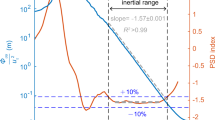Abstract
A self-consistent theoretical model for storm continuum and bursts is presented. We propose that the Langmuir waves are emitted spontaneously by an anisotropic loss-cone distribution of electrons trapped in the magnetic field above active regions. These high-frequency electrostatic waves are assumed to coalesce with lower-hybrid waves excited either by the trapped protons or by weak shocks, making the observed brightness temperature equal to the effective temperature of the Langmuir waves.
It is shown that whenever the collisional damping (ν c ) is more than the negative damping (-γ A ) due to the anisotropic distribution, there is a steady emission of Langmuir waves responsible for the storm continuum. The type I bursts are generated randomly whenever the collisional damping (ν c ) is balanced by the negative damping (-γ A ) at the threshold density of the trapped particles, since it causes the effective temperature of Langmuir waves to rise steeply. The number density of the particles responsible for the storm radiation is estimated. The randomness of type I bursts, brightness temperature, bandwidth and transition from type I to type III storm are self-consistently explained.
Similar content being viewed by others
References
Benz, A. O. and Thejappa, G.: 1988, Astron. Astrophys. 202, 267.
Benz, A. O. and Wentzel, D. G.: 1981, Astron. Astrophys. 94, 100.
Breizmann, B. N.: 1986, Soviet J. Plasma Phys. 12, 942.
Daigne, G., Lantos-Jarray, M. F., and Pick, M.: 1970, in R. Howard (ed.), IAU Symp. 43, 609.
Elgaroy, O.: 1977, Solar Noise Storms, Pergamon Press, Oxford.
Erdelyi, A.: 1953, Higher Transcendental Functions, McGraw-Hill, New York.
Fung, S. F., Papagopoulos, K., and Wu, C. S.: 1982, J. Geophys. Res. 87, 8077.
Hey, J. S.: 1946, Nature 157, 47.
Ichimaru, S.: 1973, Basic Principles of Plasma Physics, W. A. Benjamin, New York.
Kennel, C. F. and Petschek, H. E.: 1966, J. Geophys. Res. 71, 1.
Kerdraon, A. and Mercier, C.: 1983, Astron. Astrophys. 127, 132.
Krasnosel'skiph, V. V., Kruchina, E. N., Thejappa, G., and Volokitin, A. S.: 1985, Astron. Astrophys. 149, 323.
Kulygin, V. M., Mikhailovskii, A. B., and Tsapelkin, E. S.: 1971, Plasma Phys. 13, 1111.
Kundu, M. R.: 1965, Solar Radio Astronomy, Interscience Publishers, New York.
Kundu, M. R., Gergely, T. E., Szabo, A., Loiacono, R., and White, S. M.: 1986, Astrophys. J. 308, 436.
Lampe, M. and Papadopoulos, K.: 1977, Astrophys. J. 212, 886.
Le Squeren, A. M.: 1963, Ann. Astrophys. 26, 97.
Melrose, D. B.: 1974, Australian J. Phys. 21, 271.
Melrose, D. B.: 1980a, Solar Phys. 67, 357.
Melrose, D. B.: 1980b, Space Sci. Rev. 26, 3.
Melrose, D. B.: 1980c, Plasma Astrophysics, Vol. 2, Gordon and Breach Science Publishers, New York.
Melrose, D. B. and Brown, J. C.: 1976, Monthly Notices Roy. Astron. Soc. 176, 15.
Melrose, D. B. and White, S. M.: 1979, Proc. Astron. Soc. Australia 3, 369.
Shapiro, V. D. and Shevchenko, V. I.: 1988, Astrophys. Space Phys. Rev. 6, 425.
Sitenko, A. G.: 1982, Fluctuations of Non-Linear Wave Interactions in Plasmas, Pergamon Press, New York.
Spicer, S. D., Benz, A. O., and Huba, J. D.: 1981, Astron. Astrophys. 105, 221.
Thejappa, G.: 1987, Solar Phys. 111, 45.
Thejappa, G., Gopalswamy, N., and Kundu, M. R.: 1990, Solar Phys. 127, 165.
Vaisberg, O. L., Galeev, A. A., Zastenker, G. N., Klimov, S. I., Norzdrachev, M. N., Sagdeev, R. Z., Sokolov, A., and Shapiro, A.: 1983, Soviet Phys. JETP 58, 716.
Wentzel, D. G.: 1981, Astron. Astrophys. 100, 20.
Wentzel, D. G.: 1985, Astrophys. J. 296, 278.
Wentzel, D. G.: 1986, Solar Phys. 103, 141.
White, S. M., Kundu, M. R., and Szabo, A.: 1986, Solar Phys. 107, 135.
Zaitsev, V. V. and Stepanov, A. V.: 1975, Astron. Astrophys. 45, 135.
Zaitsev, V. V. and Stepanov, A. V.: 1983, Solar Phys. 88, 297.
Zheleznyakov, V. V.: 1977, Electromagnetic Waves in Cosmic Plasma, Generation and Propagation, Nauka, Moscow (in Russian).
Author information
Authors and Affiliations
Additional information
On leave from Indian Institute of Astrophysics, Bangalore 560034, India.
Rights and permissions
About this article
Cite this article
Thejappa, G. A self-consistent model for the storm radio emission from the Sun. Sol Phys 132, 173–193 (1991). https://doi.org/10.1007/BF00159137
Received:
Revised:
Issue Date:
DOI: https://doi.org/10.1007/BF00159137




